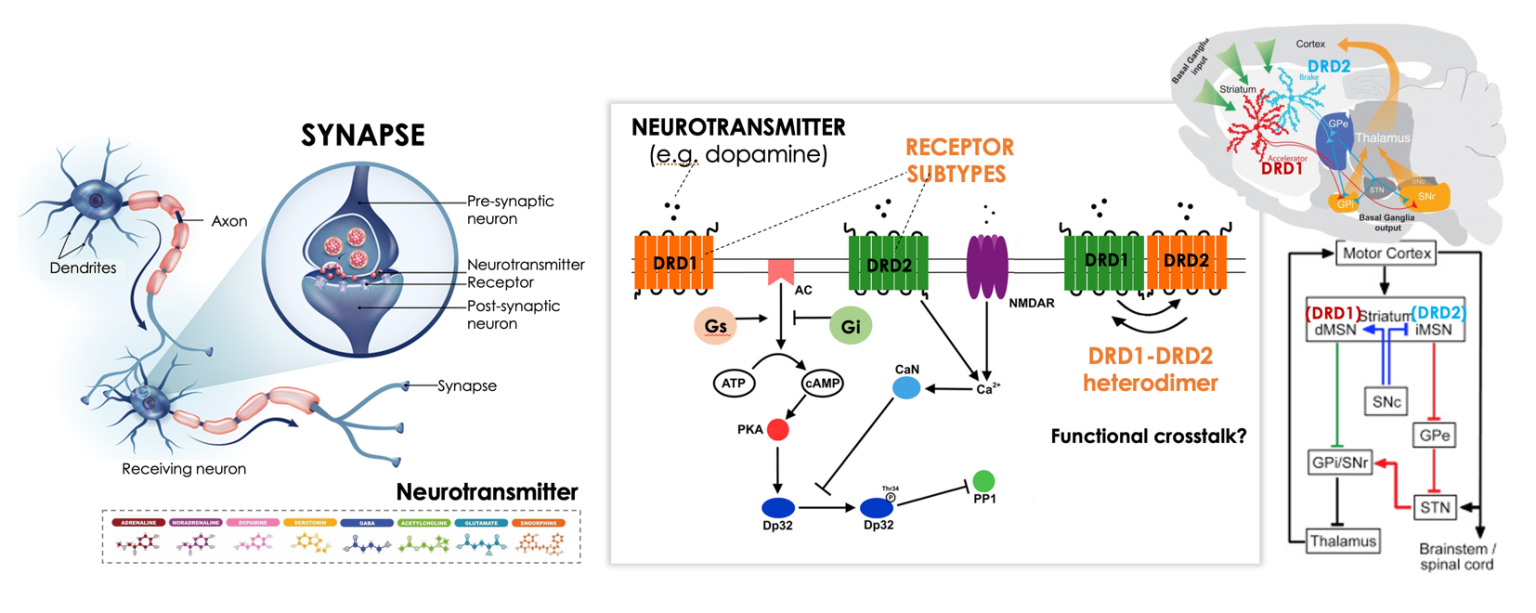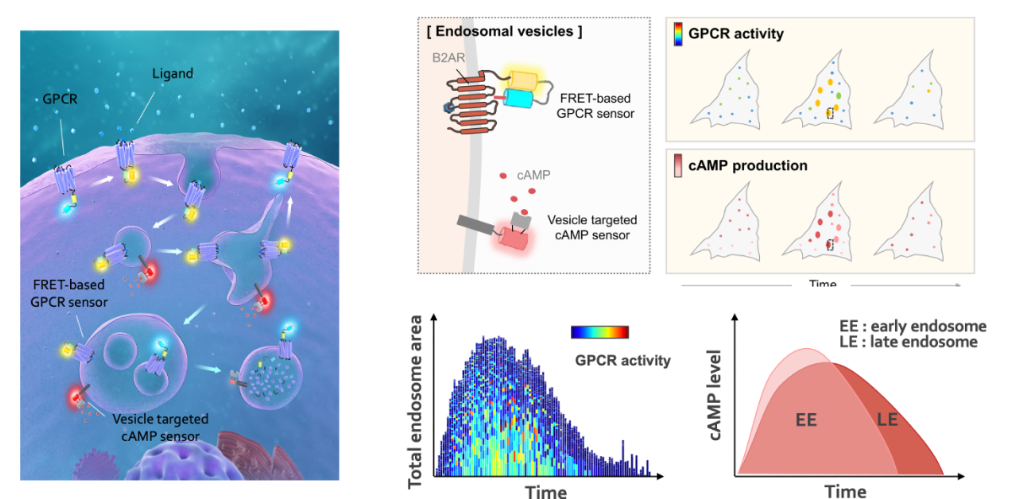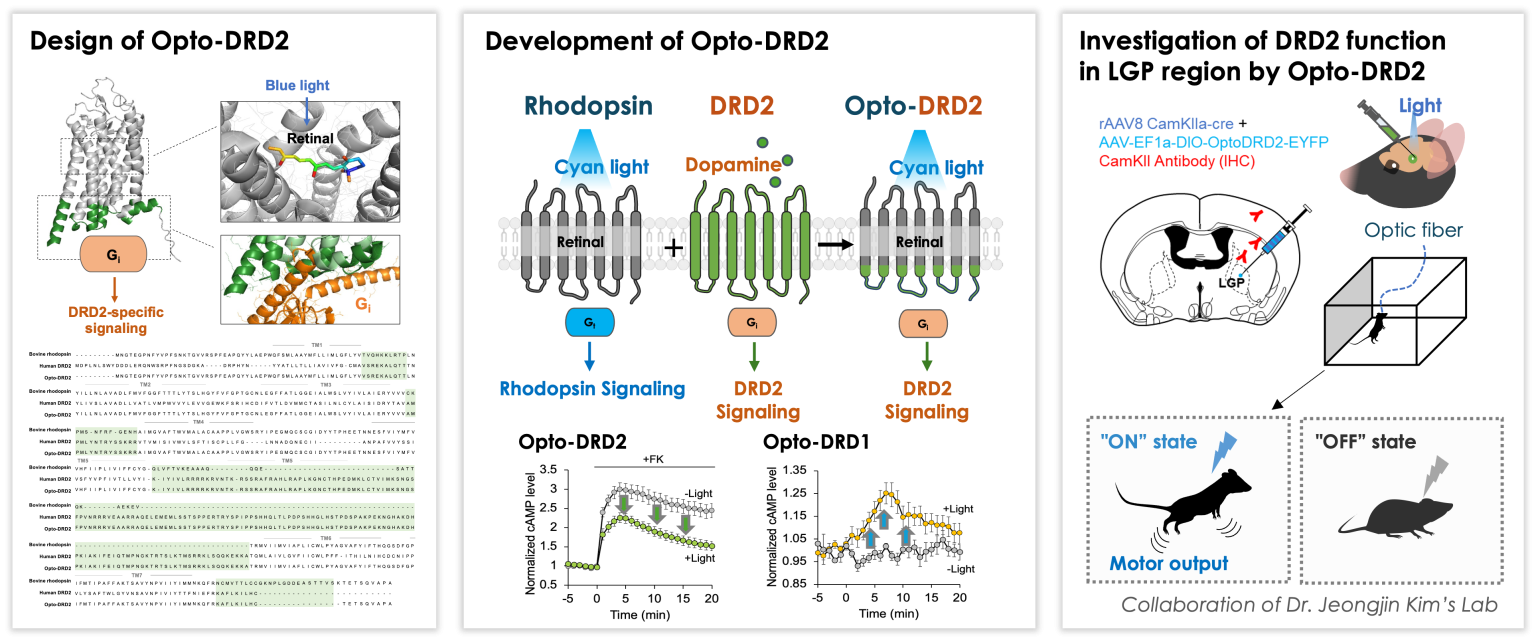G protein-coupled receptor (GPCR)
Neurotransmission is the key mechanism for brain functions. At the synapse between neurons, the released neurotransmitters bind to their receptors, which are often G protein-coupled receptors (GPCRs), and these receptor-specific signaling pathways precisely control complex brain functions.

Thus, real-time monitoring of these GPCRs is necessary to correctly understand how the brain works. In addition, precise control of neurotransmitter receptors is required to investigate their specific roles for brain functions.
For real-time monitoring of dopamine receptor (DRD) activity, we developed multi-color biosensors that can distinguish the activity of DRD1 and DRD2 (Progress in Neurobiology, 2022).

We are currently investigating the roles of DRD1 and DRD2 in the pathological mechanisms of Parkinson’s disease.
GPCRs mainly function at plasma membrane upon ligand binding, but some GPCRs can maintain their activity after internalization. Utilizing the FRET-based B2AR biosensor and cAMP biosensor, we characterized the GPCR activity and functions during endosomal trafficking pathway (Analytical Chemistry, 2021).

We are developing FRET/BRET-based sensing systems to precisely monitor downstream signaling pathways of GPCRs. These systems will be useful to develop GPCR-targeting drugs for many diseases.
For precise control of GPCRs, we develop optogenetic actuators called OptoXRs, chimeric receptors of photosensitive rhodopsin and target GPCRs. For example, OptoDRD2 can selectively activate DRD2 signaling pathway in the brain upon blue light illumination (Journal of Neuroscience, 2025).

We are further optimizing OptoXRs to more precisely control specific neurotransmission in the brain, which can explore their roles in the brain functions.
